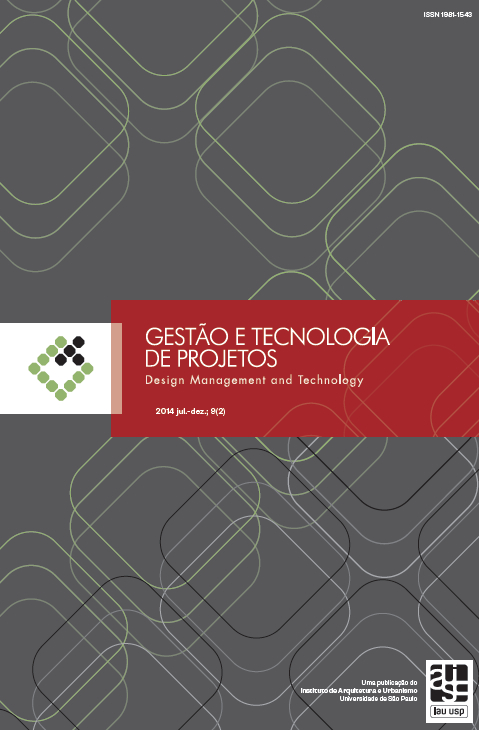Ontologies in Building Construction: an alternative to the problem of interoperability using IFC
DOI:
https://doi.org/10.11606/gtp.v9i2.69141Keywords:
Building Information Modeling (BIM), Interoperability, IFC.Abstract
Interoperability, i.e., the possibility to exchange information between distinct software, in a transparent way, by means of a digital model, is one of the major benefits promised and still not fully accomplished with Building Information Modeling (BIM) embracing. The open data schema Industry Foundation Classes (IFC) was created to favor interoperability and it was largely incorporated by most of the software companies. It comprehends a set of classes that represents a building in its whole life-cycle. However, to contemplate the needs from different professionals that deal with the model, and demand distinct information and representations for the same building element, many of the implementation details were not specified. Thus, parts of the model can be represented in different ways, by each of the different software used by actors in the process, making interoperability difficult and generating the necessity of manual reworking of the model at each exchange. One alternative to this problem is the creation of a layer of common meaning - ontology – to regulate the exchanges. This article presents, discusses and compares two distinct approaches for the solution of the IFC interoperability problem: transforming IFC (EXPRESS) into Web Ontology Language (OWL) and the formalization of Model View Definitions (MVDs), that are used to regulate information exchange. The base of comparison between the solutions is in terms of which limitations or deficiencies of IFC could be handled with each approach.
Downloads
References
BAADER, F.; CALVANESE, D.; MCGUINNESS, D.; NARDI, D.; PATEL-SCHNEIDER, P. The Description Logic Handbook: Theory, Implementation, and Applications. New York, Cambridge University Press, 2003.
BARBAU, R.; KRIMA, S.; RACHURI, S.; NARAYANAN, A.; FIORENTINI, X.; FOUFOU, S., SRIRAM, R. D. OntoSTEP: Enriching product model data using ontologies. Computer-Aided Design, 44, p. 575-590, Elsevier, 2012, DOI: http://dx.doi.org/10.1016/j.cad.2012.01.008.
BEETZ, J.; LAAT, R.; VAN BERLO, L.; VAN DEN HELM, P. Towards an open Building Information Model server. Technical Report, 2010.
BEETZ, J.; LEEUWEN, J. V.; VRIES, B. IfcOWL: A case of transforming EXPRESS schemas into ontologies. Artificial Intelligence for Engineering Design, Analysis and Manufacturing, 23, p. 89-101, 2009. Cambridge University Press, DOI: http://dx.doi.org/10.1017/S0890060409000122 .
buildingSMART. http://www.buildingsmart-tech.org/ifc/IFC2x4/rc4/html/index.htm. 2013.
EASTMAN, C.; TEICHOLZ, P.; SACKS, R.; LISTON, K. BIM handbook – A guide to building information modeling for owners, managers, designers, engineers, and contractors. Second Edition, John Wiley & Sons, Inc., 2011.
HORROCKS, I.; PATEL-SCHNEIDER, P. F.; VAN HARMELEN, F. From SHIQ and RDF to OWL: the making of a Web Ontology Language. Web Semantics: Science, Services and Agents on the World Wide Web 1(1), p. 7-26, 2003.
SACKS, R.; Kaner, I.; EASTMAN, C. M.; JEONG, Y.-S. The Rosewood experiment – Building information modeling and interoperability for architectural precast facades. Automation in Construction, 19, p. 419-432, 2010, DOI: http://dx.doi.org/10.1016/j.autcon.2009.11.012.
VENUGOPAL, M.; EASTMAN, C. M.; SACKS, R.; TEIZER, J. Semantics of model views for information exchanges using industry foundation class schema. Advanced Engineering Informatics, 26, p. 411-428, 2012. Elsevier, DOI: http://dx.doi.org/10.1016/j.aei.2012.01.005.
YOUNG, N.; JONES, S.; BERNSTEIN, H.; GUDGEL, J. The business value of BIM: getting Building Information Modeling to the bottom line. Technical Report. McGraw-Hill Companies, New York, 2009.
ZHAO, W.; LIU, J. K. OWL/SWRL representation methodology for EXPRESS-driven product information model (Part I. Implementation methodology). Computers in Industry, 59, p. 580-589, Elsevier, 2008, DOI: http://dx.doi.org/10.1016/j.compind.2008.02.002.
Downloads
Published
Issue
Section
License
Copyright Notice
Authors who publish in this journal agree to the following terms:
- Authors retain the copyright and grant the journal the right of first publication, with the article simultaneously licensed under the Creative Commons Attribution License BY NC ND, which allows the sharing of article with acknowledgment of authorship and initial publication in this journal.
- Authors are authorized to take additional contracts separately, for non-exclusive distribution of version of the article published in this journal (e.g. publish in institutional repository or as a book chapter), with acknowledgment of authorship and initial publication in this journal.
- Authors are allowed and encouraged to publish and distribute their research work online (e.g. in institutional repositories or on their personal page) at any point before or during the editorial process, as this can generate productive changes, as well as increase the impact and the citation of published article (See O Efeito do Acesso Livre).



